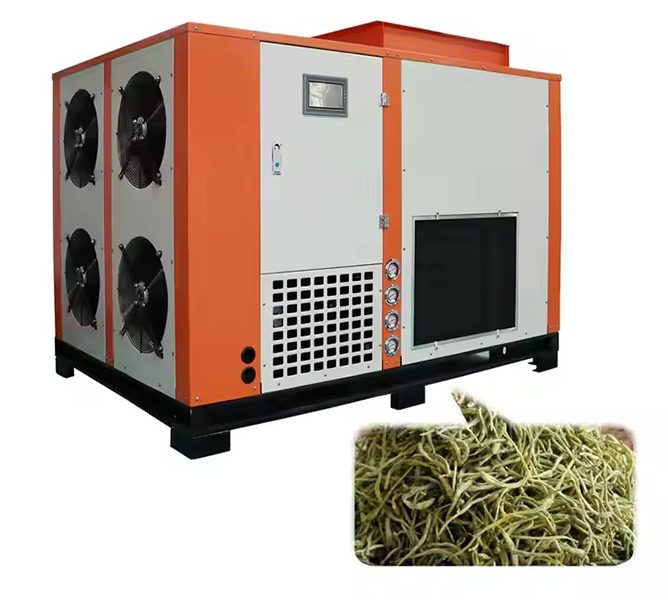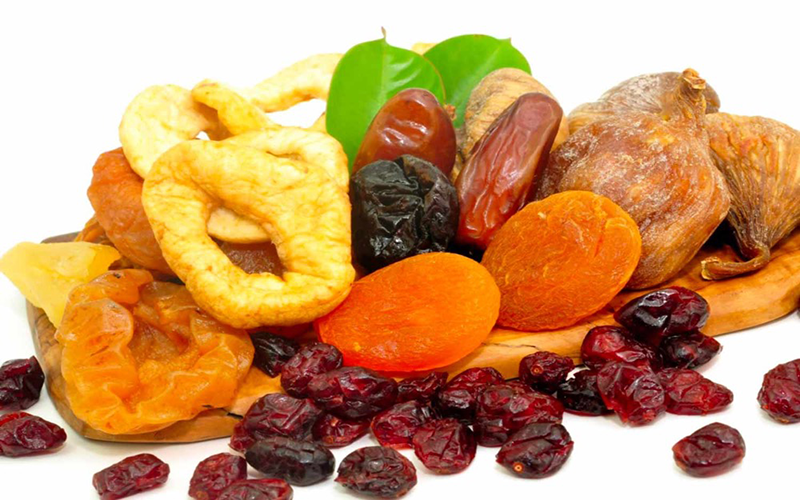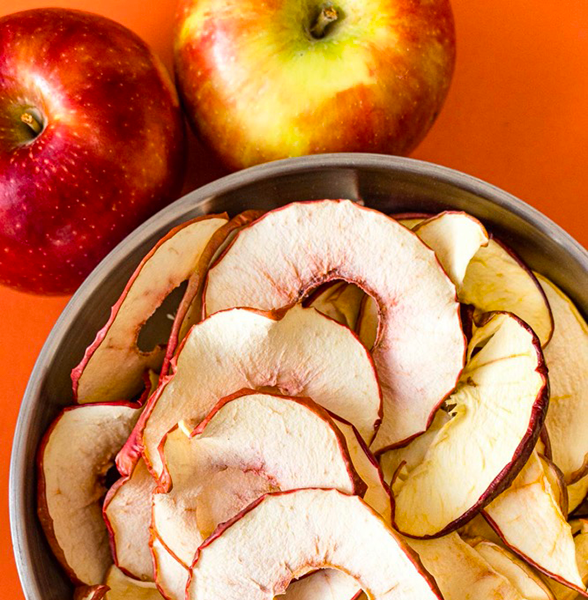
Content Menu
● Understanding Your Food Dehydrator
● Why Cleaning is Important
● How To Clean A Food Dehydrator
>> Step 1: Gather Your Supplies
>> Step 2: Unplug and Disassemble
>> Step 3: Clean the Trays
>> Step 4: Clean the Drip Tray
>> Step 5: Clean the Heating Element and Fan
>> Step 6: Clean the Exterior
>> Step 7: Dry All Components
>> Step 8: Reassemble Your Dehydrator
● Maintenance Tips for Your Food Dehydrator
● Common Problems and Troubleshooting Tips
>> Uneven Drying
>> Slow Drying
>> Odors from Dehydrated Foods
● Delicious Recipes for Your Dehydrated Foods
>> Fruits
>> Vegetables
>> Meats
>> Snacks
● Conclusion
● FAQ
>> 1. How often should I clean my food dehydrator?
>> 2. Can I put my dehydrator trays in the dishwasher?
>> 3. What should I do if my dehydrator has a strong odor?
>> 4. Is it safe to use bleach for cleaning my dehydrator?
>> 5. How can I prevent my food from sticking to the trays?
● Citations:
Food dehydrators are essential appliances for anyone interested in preserving fruits, vegetables, and meats. They allow you to create healthy snacks and extend the shelf life of food without the need for preservatives. However, like any kitchen appliance, food dehydrators require regular cleaning to ensure they function optimally and maintain food safety. In this article, we will explore how to clean a food dehydrator effectively, along with tips for maintaining it in top condition.

Understanding Your Food Dehydrator
Before diving into the cleaning process, it's important to understand the components of a food dehydrator. Most models consist of:
- Heating Element: Provides the heat necessary for drying food.
- Fan: Circulates air throughout the dehydrator.
- Trays: Where the food is placed for drying.
- Drip Tray: Catches any liquids that may drip from the food.
Each of these components can accumulate residue or debris over time, making it essential to clean them regularly.
Why Cleaning is Important
Cleaning your food dehydrator is crucial for several reasons:
- Preventing Bacteria Growth: Residue from dried foods can harbor bacteria, which may contaminate future batches.
- Maintaining Efficiency: A clean dehydrator operates more efficiently, ensuring even drying and better energy use.
- Extending Appliance Life: Regular maintenance helps prolong the life of your dehydrator.
How To Clean A Food Dehydrator
Cleaning a food dehydrator can be broken down into several steps:
Step 1: Gather Your Supplies
You will need:
- Warm soapy water
- Soft sponge or cloth
- Soft-bristle brush (for stubborn residue)
- White vinegar (optional)
- Baking soda (optional)
Step 2: Unplug and Disassemble
Always unplug your dehydrator before cleaning. Remove all trays and any other removable parts. If your model has a drip tray, take that out as well.
Step 3: Clean the Trays
1. Soak in Warm Soapy Water: Fill your sink with warm soapy water and soak the trays for about 15 minutes.
2. Scrub Gently: Use a soft sponge or cloth to scrub away any residue. For stubborn spots, a soft-bristle brush can help.
3. Rinse Thoroughly: Rinse each tray under warm running water to remove soap residue.
4. Optional Vinegar Solution: For extra disinfection, you can wipe down the trays with a solution of equal parts water and white vinegar.
Step 4: Clean the Drip Tray
Follow the same steps as above for cleaning the drip tray. Ensure it is free of any sticky substances that could attract pests or bacteria.
Step 5: Clean the Heating Element and Fan
1. Wipe Down: Use a damp cloth to wipe down the heating element and fan. Be careful not to get water inside any electrical components.
2. Use a Brush: If there is dust or debris in hard-to-reach areas, use a soft-bristle brush to gently remove it.
Step 6: Clean the Exterior
Wipe down the exterior of your dehydrator with a damp cloth. This helps remove dust and keeps your appliance looking new.
Step 7: Dry All Components
After washing, let all parts air dry completely before reassembling them. This prevents moisture buildup that could lead to mold growth.
Step 8: Reassemble Your Dehydrator
Once everything is dry, reassemble your dehydrator carefully. Ensure all parts are securely in place before plugging it back in.

Maintenance Tips for Your Food Dehydrator
To keep your food dehydrator in optimal condition:
- Clean After Each Use: Make it a habit to clean your dehydrator after every use to prevent buildup.
- Store Properly: When not in use, store your dehydrator in a cool, dry place with all parts disassembled if possible.
- Check for Wear and Tear: Regularly inspect your dehydrator for any signs of damage or wear that may need repair or replacement.
Common Problems and Troubleshooting Tips
While using a food dehydrator, you may encounter some common issues. Understanding these problems can help you troubleshoot effectively:
Uneven Drying
Uneven drying can occur due to:
- Uneven Airflow: Ensure that food is evenly spaced on the trays and that there is enough space between them for air circulation.
- Overcrowding: Avoid overcrowding trays as this can block airflow and lead to uneven drying.
- Rotating Trays: Rotate trays during the drying process to ensure all food items are evenly exposed to heat[2].
Slow Drying
If you find that your foods are taking longer than expected to dry:
- Check Temperature Settings: Ensure you're using the correct temperature setting; typically between 130°F and 140°F works best for most foods[5].
- Slice Thickness: Cut food into thinner slices to reduce drying time; thicker pieces retain moisture longer[5].
Odors from Dehydrated Foods
If you notice unpleasant odors during operation:
- Thorough Cleaning: Regularly clean all components after use to prevent odors from lingering in the machine[5].
- Dehydrate Similar Foods Together: To avoid mixing scents, dehydrate foods with similar aromas together[5].
Delicious Recipes for Your Dehydrated Foods
Using a food dehydrator opens up numerous culinary possibilities. Here are some popular recipes you can try:
Fruits
- Dried Apples: Slice apples thinly, sprinkle with cinnamon if desired, and dehydrate at 135°F for about 6–8 hours.
- Banana Chips: Thinly slice bananas and dehydrate at 135°F for about 10–12 hours until crisp[9].
Vegetables
- Zucchini Chips: Slice zucchini thinly, season with salt or spices, and dehydrate at 125°F for about 6–8 hours until crispy[10].
- Dehydrated Tomatoes: Cut tomatoes into halves or quarters, season lightly with salt, and dehydrate at 135°F until leathery but not brittle[10].
Meats
- Beef Jerky: Marinate beef strips in your favorite seasoning mix overnight before dehydrating at 160°F for about 6–8 hours until chewy but not hard[6].
Snacks
- Fruit Leather: Blend fruits like strawberries or mangoes into a puree, spread onto trays lined with parchment paper, and dehydrate at 135°F until pliable[9].
Conclusion
Cleaning your food dehydrator is essential for maintaining its performance and ensuring food safety. By following these steps regularly, you can enjoy delicious dried foods without worrying about contamination or appliance efficiency. Remember that proper maintenance not only extends the life of your dehydrator but also enhances your overall experience in food preservation. With these tips and recipes at hand, you'll be well on your way to creating healthy snacks that last!

FAQ
1. How often should I clean my food dehydrator?
It is recommended to clean your food dehydrator after every use to prevent residue buildup and ensure optimal performance.
2. Can I put my dehydrator trays in the dishwasher?
Most plastic trays are dishwasher safe; however, always check the manufacturer's instructions before doing so.
3. What should I do if my dehydrator has a strong odor?
If you notice an odor, clean all components thoroughly and consider using baking soda on affected areas to neutralize smells.
4. Is it safe to use bleach for cleaning my dehydrator?
No, bleach should not be used as it can leave harmful residues. Stick to warm soapy water or vinegar solutions for safe cleaning.
5. How can I prevent my food from sticking to the trays?
Using parchment paper or silicone mats can help prevent sticking when drying foods like fruits or sticky items.
Citations:
[1] https://www.wisdompreserved.life/how-to-clean-a-dehydrator
[2] https://royalangkor.ca/commercial-food-dehydrator/
[3] https://www.lowcarb-nocarb.com/dehydrated-food/
[4] https://www.reddit.com/r/dehydrating/comments/lkjdl8/im_new_how_do_i_clean_my_dehydrator_after/
[5] https://dehydratedfoodz.com/issues-with-food-dehydrators/
[6] https://cottageatthecrossroads.com/dehydrator-recipes/
[7] https://www.backcountrypaleo.com/cleaning-food-dehydrator/
[8] https://www.ruralsprout.com/food-dehydrator/
[9] https://www.callmelore.com/fool-proof-healthy-dehydrator-recipes/
[10] https://insanelygoodrecipes.com/dehydrator-recipes/











